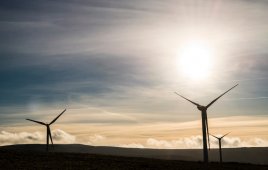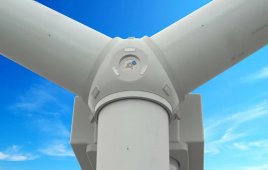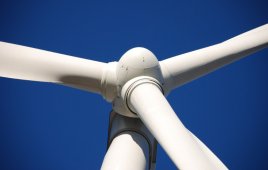Byron Boone, Product Manager, Boulder Wind Power, www.boulderwindpower.com
Permanent Magnet Generators (PMGs), first introduced on a large scale to the wind industry in the early to mid-2000s, are expected to continue to increase market share from 17% in 2011 to nearly 40% by 2015. PMGs have a growing group of supporters because of the flexibility, improved reliability, and increased efficiency that they bring to drivetrain configurations. Yet as turbines increase in size, so do the PMG challenges. Several technology companies, including Sway Turbine, Goliath Wind, and Boulder Wind Power, are tackling the challenges by taking the fundamentals of permanent-magnet generators and applying them to improved generator designs.
Benefits and challenges
A high speed, doubly-fed induction generator is the most common drivetrain topology in use today. In it, an electric current induces a magnetic field on the rotor. A PMG, however, uses high strength, permanent magnets to create a magnetic field on the rotor. With no electrical current flowing to the rotor, there is no need for brushes, which ultimately improves reliability.
In a PMG, the number of magnetic poles and the rotational speed of the generator determine the frequency of the generator output, which passes through a full power converter before it is exported to the grid. These drivetrain characteristics have numerous benefits. The full power converter fully decouples the generator from the grid, and converts all of the generator output to grid specifications, thereby allowing the turbine to be in full grid-code compliance. In addition, PMGs can operate at different rotational speeds, letting manufacturers design wind turbine drivetrains around their preferred drivetrain topologies, potentially using a one or two-stage gearbox for medium speed, or removing the gearbox altogether which further improves reliability.
Even with these advantages, challenges remain for permanent magnet generators, especially as turbines grow in power rating and reliability requirements increase for offshore applications.
In one challenge, PMGs rely on traditional mica tape insulation and iron-core slots for their stator coils. This stator-insulation system is sensitive to vibration and thermal cycling, and particularly vulnerable where the end-turns are unsupported as they exit the slots of the PMG iron core. Additionally, certain rotor designs in permanent magnet, direct-drive generators impose significant heat-transfer challenges that the thermal-management system must overcome, adding a degree of complexity to the cooling system and impacting reliability. Finally, increased rotor diameters, power ratings, and concerns over blade-tip speed require generators to grow either axially or radially to produce more torque. If grown radially, the air gap between the stator and rotor becomes harder to maintain, requiring more structural mass that can offset gains in reliability and energy production.
New thinking
Several companies, including Boulder Wind Power (BWP), are meeting these challenges by implementing axial flux generator technology. Rather than use a radial flux configuration where the magnetic field is applied radially inward and outward from the rotor, in an axial flux generator, the magnetic field is applied along the rotor axis. The electromagnetic concept in an axial flux generator operates similarly to a radial flux generator, but the lack of an iron core removes the attractive forces between the rotor and stator – the absence of which means lower structural loads and large weight reductions, even as power ratings grow. With lower structural loads and no iron core, axial-flux PMGs can also increase efficiencies, particularly at lower wind speeds.
BWP’s axial flux generator has addressed the challenges facing radial flux, iron-core PMGs several ways. Given the previously-mentioned vulnerability of traditional stator insulation systems, the BWP design improves reliability by using printed circuit board (PCB) technology as stator modules. In a PCB stator, the automated-manufacturing process fully encloses the windings in an insulation system that outperforms traditional mica tape insulation. Furthermore, a 20-kg stator module can easily be replaced by service technicians using a “plug-and-play” process, versus removing the entire generator as is required by radial flux PMGs.
Due to the lack of attractive forces between the rotor and stator, the generator needs much less structural material, and with a patented magnetic air-gap control, the stator structure can be axially flexible but torsionally stiff, resulting in an overall weight reduction compared to readily available drivetrains. In addition, the generator can be cooled without radiators or heat exchangers, further reducing weight and complexity and increasing reliability.
Whether meeting grid compliance standards, improving reliability in remote operating environments or lowering the cost of energy to compete against traditional forms of generation, the wind industry must continue to innovate and to introduce new technologies. Permanent magnet generators, and particularly axial flux designs, will continue to grow in importance and to help the industry continue its growth around the globe. WPE
Filed Under: Featured, Generators, Turbines








These are some interesting facts. I had no idea that magnet generators could perform this well. I have been trying to set up my own wind trubine system and hope to accomplish it soon.
Regards
Rod
http://www.titanindustrialheating.com